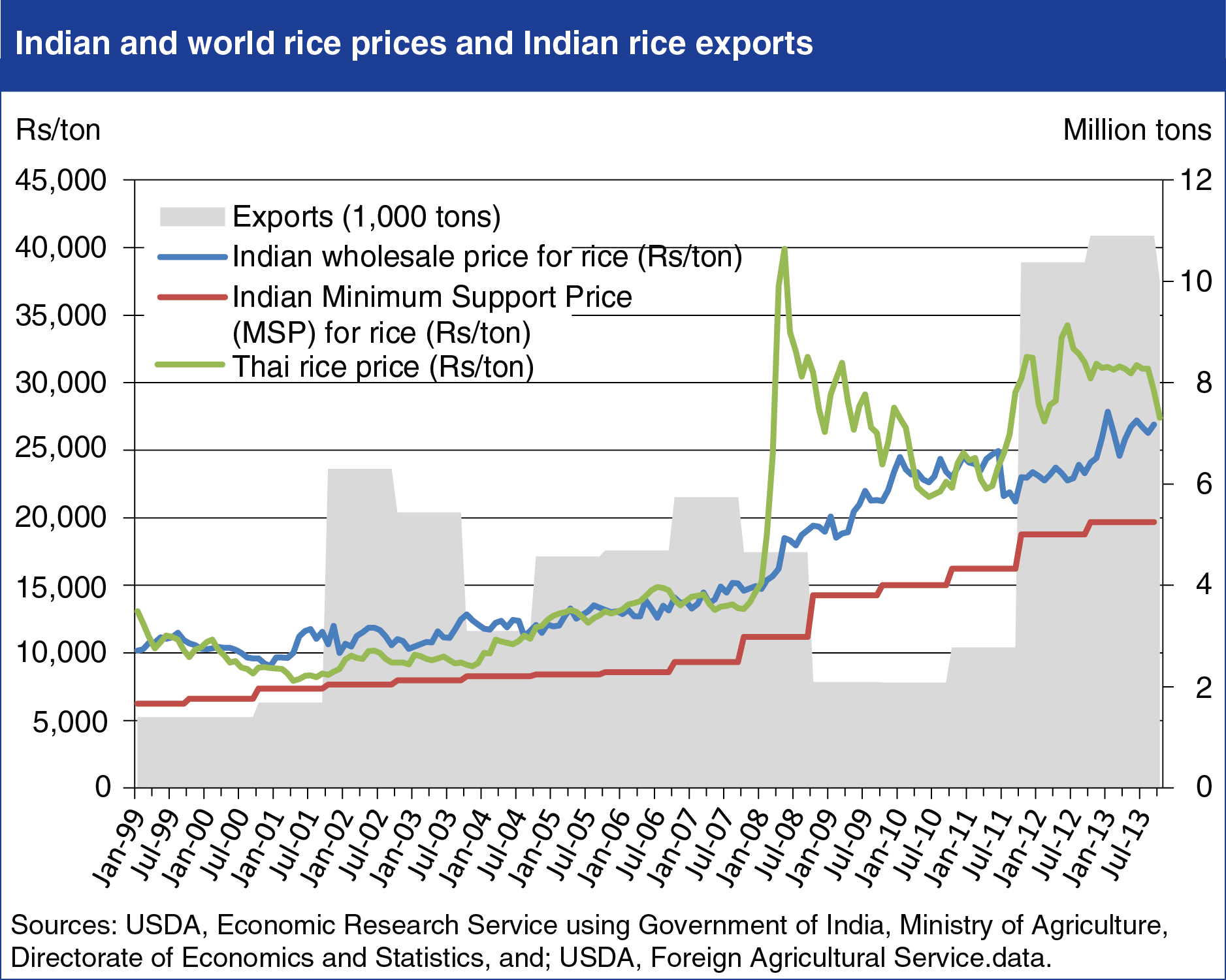Indian rice prices typically lower and more stable than world prices
- by Sharad Tandon
- 12/4/2014

Because rice is an important commodity for Indian producers and consumers, Indian Government policies intervene heavily in its domestic rice market. Particularly since the global price spike in 2008, India’s system of providing Minimum Support Prices (MSPs) for growers, distributing rice purchased at the MSP to consumers at subsidized prices, and placing periodic bans or quotas on rice exports, has kept domestic rice prices lower and more stable than world prices (represented by the export price of Thai rice). In 2008, India increased subsidized rice distribution and banned most exports of non-basmati (aromatic, long grain) rice to prevent higher world prices from affecting the domestic market; however, domestic rice prices still increased more than 30 percent between mid-2007 and early 2010. According to ERS research, Indian rice consumers were able to maintain rice consumption, but did so primarily by reducing expenditures on non-staple foods, health care, and durable goods. India’s higher level of exports since 2011, along with increases in MSPs, has contributed to current concerns with inflation in domestic rice prices. Find this chart and more in-depth research in Coping Strategies in Response to Rising Food Prices: Evidence from India.

